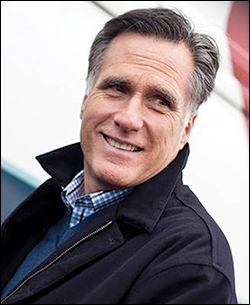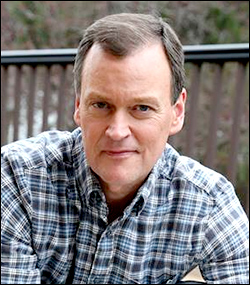By Jim Ellis
Feb. 5, 2018 — A pair of major Republican figures yesterday made public that likely candidate declarations will be forthcoming in mid-February.
In Utah, a spokesperson for former Republican presidential nominee and ex-Massachusetts Gov. Mitt Romney says the latter is scheduling a major announcement for Feb. 15. Though stopping short of saying that Romney will announce his candidacy for the seat that veteran Sen. Orrin Hatch (R) is vacating, it would be virtually preposterous for someone to schedule an event in advance only to announce that he would not be running.Several states to the east, former Minnesota Gov. Tim Pawlenty (R), while in mid-January declined to enter the state’s special US Senate election to oppose appointed incumbent Tina Smith (D), is calling together past supporters for a Feb. 12 meeting to access his chances of again running for governor. Since the Republican field appears weak at this point, Pawlenty entering the race would quickly make him the favorite for the party nomination, at the very least.
Once Romney enters the Senate race, he will be a virtual lock to win the election. A University of Utah poll conducted for the Salt Lake Tribune (Jan. 15-18; 803 registered Utah voters) found the former presidential candidate jumping out to a huge 64-19 percent lead over Salt Lake County Councilwoman Jenny Wilson (D), the major announced Democratic candidate. Romney was scoring 85 percent loyalty among Republicans, attracting 55 percent of Independents, and 18 percent of Democrats.
It is widely believed that he would bypass the state Republican nominating convention and access the ballot through the petition process. Such a move would make sense and is the safest path to avoid any nomination glitch. In Utah, candidates can advance to a primary election through obtaining at least 40 percent convention delegate support or gathering signatures from registered voters. If a candidate receives at least 60 percent of the delegate vote, he or she solely advances to the primary ballot to face only those who may have qualified through petition.
While Romney would likely have little trouble getting at least 40 percent delegate support, surprising things can happen at conventions where a relatively few number of people have the power to make statewide political decisions. With his vast financial resources, however, being able to hire adult Utah residents to circulate petitions and gather 28,000 valid registered voter signatures by the candidate filing deadline on March 15 is a task that his new campaign operation should reasonably be able to accomplish with little fanfare.
MINNESOTA
Though nine Republicans have announced for the open Minnesota gubernatorial race, only one has previously run statewide. Hennepin County Commissioner Jeff Johnson was the party’s 2014 gubernatorial nominee, and lost to Gov. Mark Dayton (D) by a 50-44 percent margin. Though the race was relatively close, the outcome was never in doubt and Johnson’s 2018 nomination is not a lock. It is likely that Pawlenty, who won the 2002 and 2006 gubernatorial elections, would have a relatively clear path to this year’s Republican nomination.Though Minnesota is not a convention state, the party conclaves usually produce the nominees. Most candidates do not proceed to a primary election once an opponent secures the convention endorsement.
Democrats have six announced candidates, led by US Rep. Tim Walz (D-Mankato), state Auditor Rebecca Otto, and former St. Paul Mayor Chris Coleman. The race changed early this week when Attorney General Lori Swanson, long expected to seek the Democratic gubernatorial nomination, instead announced that she would seek re-election to her current position. This development further opened the door to make another Pawlenty gubernatorial run all the more realistic.
Minnesota, while in the past has been a reliable Democratic state, is moving right. President Trump came within 1.5 percentage points of becoming the first Republican presidential nominee to carry the state since Richard Nixon in 1972, and he held Hillary Clinton to just 46.4 percent of the vote. Therefore, GOP chances of winning the open gubernatorial race are brighter than in years past.
The Minnesota precinct caucuses begin on Feb. 6, with the state GOP convention scheduled for June 1-2. If a primary is forced, that election will occur on Aug. 14. Though Minnesota has no term limit law, Gov. Dayton is retiring after two terms. Pawlenty chose not to seek a third term in 2010 because he was planning to enter the 2012 presidential race, a campaign that he began but then quickly ended.


